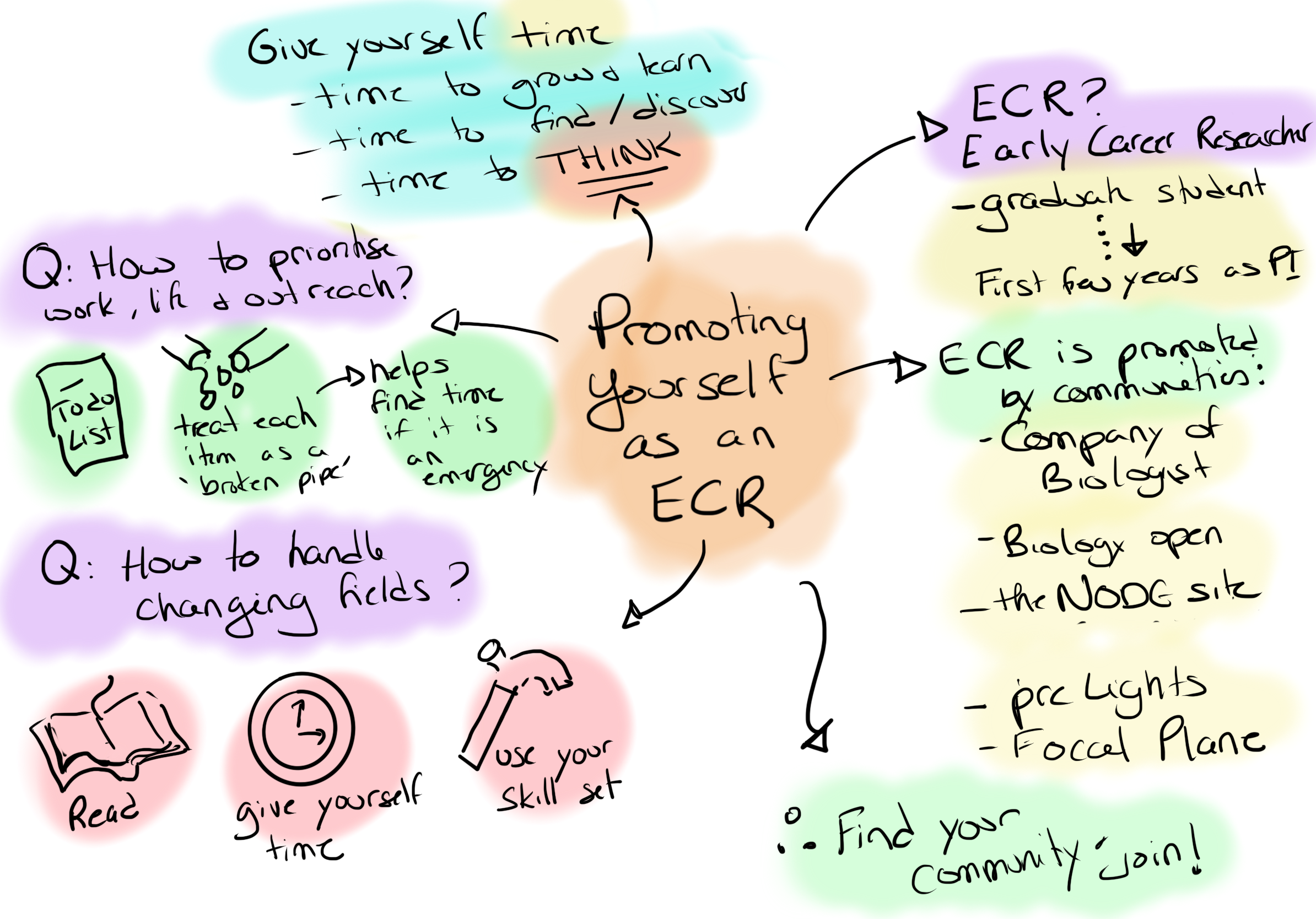SciArt profile: Maria Abou Chakra
Posted by the Node, on 23 March 2022
In our latest SciArt profile, we meet Maria Abou Chakra. Maria is a theoretical biologist who introduces us to her sci-sketchnotes and highlights the importance of creativity in science.

Where are you originally from and what do you work on now?
I am from Canada. I am a theoretical biologist, with a focus on complex biological phenomena using evidence linked modelling. For my PhD thesis, I was trained in evolutionary biology and theoretical morphology, in the lab of Jon Stone at McMaster University, Canada. I developed a mathematical model that explores both growth and form of sea urchin skeletons. After graduating, I moved to Germany to work at the Max Planck Institute for Evolutionary Biology, where I was trained, under the supervision of Arne Traulsen, in evolutionary game theory. I developed models that capture and predict behaviours in complex social dilemmas such as climate change negotiations and host parasite interactions. Since 2016, I have been working as research associate, in the lab of Gary Bader, creating 3D mathematical models that explore cell development. My current research tries to understand how cell decisions happen and use mathematical modelling to predict how that affects cell fates during development.

Were you always going to be a scientist?
No, my plan throughout high school was to become an engineer. I loved programming and I thought that engineering would be a good path, but then I discovered biology in my last term which led to a sudden change of heart and I switched to science!

And what about art – have you always enjoyed it?
Yes, art has been a part of my life for as long as I can remember. My dad is an architect, so he sketched all the time and as soon I could hold a pencil, I sat next to him and sketched. During my teens, I learned to paint and that became my medium of choice. As an undergrad, I tried to take art classes in parallel to my bio degree, but all the classes conflicted with lab time so I couldn’t manage both and painting became a hobby.

When did you started using science in your artwork?
As an undergrad, sketching my notes helped me retain information longer. Then, as a grad student, I helped develop an anatomy class that introduced students to sketching notes to learn and memorise information. Their incentive was that they were allowed to use their sketches during the infamous ‘bell-ringer’ exam. I now use my sci-sketchnotes as electronic summaries of research papers or talks.

At the same time, it was hard to resist sketching the beautiful skeletons of the sea urchins that I studied during my PhD. My art then evolved into painting model organisms and other marine organisms. My supervisor and another professor appreciated them and asked to use them as the covers on the yearly reports for the department.

Does your art influence your science at all, or are they separate worlds?
I cannot imagine that it is possible to separate them. I think my creativity is one of the sources of my success in my research. I think having the ability to see things from a different perspective is an asset in science, and art helps me do that. A while back I read a piece by Sydney Brenner and a line stuck with me, ‘Science is the product of human minds, and the essence of research is creative innovation’ (Brenner, 1994). To me this quote says that you need both art and science, and that creativity is essential for discovery and progress in research.

You can find out more about Maria’s science and artwork on Twitter and on her webpage.
Brenner S. (1994). Loose Ends. Current Biology 4, 288 https://doi.org/10.1016/S0960-9822(00)00067-1
Thanks to Maria and all the other SciArtists we have featured so far. You can find the full list here. We’re always on the lookout for new people to feature in this series – whatever kind of art you do, from sculpture to embroidery to music to drawing, if you want to share it with the community just email thenode@biologists.com (nominations are also welcome!)


 (4 votes)
(4 votes)